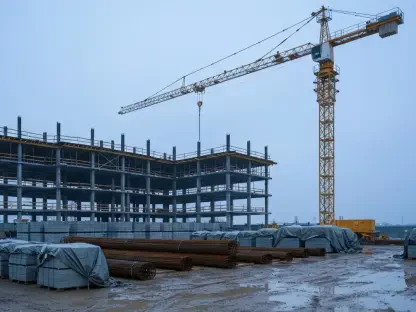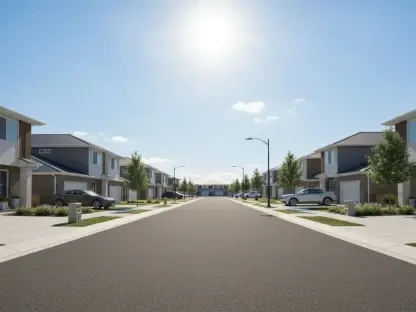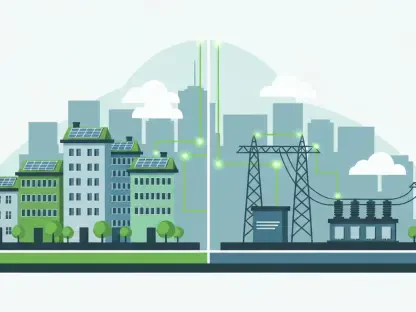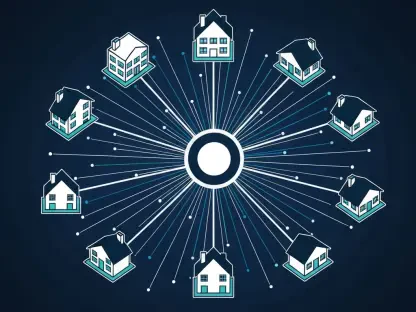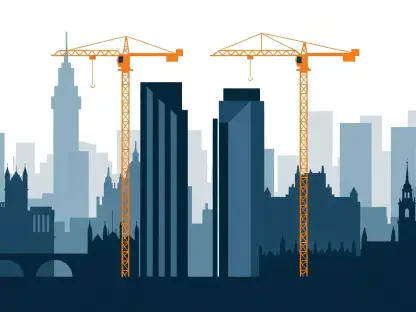The homebuilding industry, a cornerstone of modern infrastructure, has witnessed a transformative evolution affected by market demands and technological progress. Barratt Homes and David Wilson Homes, leading players in this field, stand out with expert recognition, especially for quality assurance across their projects. Known for bringing innovation and excellence, the companies recently celebrated top accolades awarded by the National House Building Council (NHBC), reaffirming their industry leadership.
Overview of the Homebuilding Industry
In today’s evolving landscape, the homebuilding industry is pivotal in shaping communities and influencing economic growth. Encompassing diverse segments such as residential, commercial, and industrial buildings, this sector is spearheaded by major players like Barratt Homes and David Wilson Homes. These companies have set benchmarks in design and quality, catering to an increasingly discerning clientele. Technological advancements, ranging from digital construction tools to cutting-edge design methodologies, have heightened industry standards, enabling builders to construct more durable and efficient homes.
As an important sector of the economy, homebuilding reflects changing societal needs and expectations. The increasing urbanization calls for innovative approaches to residential development, focusing on creating sustainable and livable communities. Recognized for their leadership in this domain, Barratt Homes and David Wilson Homes have consistently embraced such advancements to stay ahead of market trends and create lasting value for homeowners.
Trends Driving the Homebuilding Industry
Key Trends and Innovations
Consumer behavior and expectations are increasingly swayed by sustainability, smart technology, and design quality. The homebuilding industry is responding to such demands by integrating eco-friendly building practices and incorporating smart technologies into homes. This includes the use of green materials, energy-efficient systems, and intelligent home automation, promising not only environmental benefits but also enhanced living experiences. Companies like Barratt and David Wilson are pioneers, demonstrating excellence in these areas to meet evolving consumer demands.
Notable trends also include a shift toward minimalist yet functional space utilization, aligning with modern living preferences. These trends indicate a robust demand for homes that offer both aesthetic and practical value, challenging builders to devise innovative solutions that ensure environmental responsibility without sacrificing quality and comfort.
Market Insights and Future Outlook
Data points to a robust upswing in the homebuilding market, spurred by increasing urbanization and technological integration. Market forecasts project sustained growth, bolstered by a demand for quality housing and declining interest in traditional construction methods. As these trends gain momentum, industry visionaries predict a future where homes not only shelter but serve as sustainable ecosystems for families.
Furthermore, homebuilders like Barratt and David Wilson keenly anticipate these dynamics, ready to reshape the industry’s future. Armed with acute market insights, they aim to reign in emerging markets and capitalize on the demand for advanced, high-quality homes.
Challenges and Opportunities in the Industry
The homebuilding industry faces multifaceted challenges, notably labor shortages and supply chain disruptions. These hurdles impact project timelines and costs, threatening to stifle innovation and growth. Builders are compelled to explore innovative recruitment strategies and rely more heavily on automation to counteract workforce limitations. This approach has been critical for companies like Barratt and David Wilson in navigating obstacles and maintaining their quality and service standards.
However, these challenges open doors to new opportunities. Industry leaders invest in sustainable practices and digital solutions that optimize construction processes, proving indispensable for overcoming present-day constraints. Such strategic initiatives ensure companies not only surmount their difficulties but also achieve growth and market competitiveness.
Regulatory Environment in Homebuilding
Regulations in the homebuilding industry are rapidly evolving, with increased emphasis on sustainability and safety. Strict building codes and environmental standards guide construction practices to ensure community welfare and environmental preservation. Compliance with these mandates significantly impacts workflow yet remains essential for successful project execution. Leading companies dually address these regulations through innovative approaches that meet safety and efficiency standards.
These regulatory shifts compel industry players to adopt proactive strategies, such as leveraging advanced materials and techniques that adhere to evolving codes. For renowned builders like Barratt and David Wilson, compliance drives their innovation, fortifying their commitment to standards of excellence in every project.
Future Directions for the Homebuilding Industry
Emerging technologies and disruptive market forces are set to direct the course of the homebuilding industry. Developments such as 3D printing, modular construction, and sustainability innovations hold promise for creating unprecedented efficiencies and design opportunities. Companies prepared to harness these advancements are likely to redefine the homebuilding landscape.
Changes in consumer preferences, with a growing focus on personalized and adaptive housing solutions, are expected to propel industry growth. Builders are positioned to respond with dynamic strategies, meeting demands for homes that reflect lifestyle trends and ecological responsibility.
Conclusion and Industry Outlook
Barratt and David Wilson’s decisive recognition underscores the value of innovation and persistent quality in the homebuilding industry. Their success is a testament to their strategic approach and reflects broader industry shifts toward smart, sustainable, and consumer-centered building solutions. Continuing advancements are set to fuel fresh opportunities for growth and investment, offering visionaries the potential to leave a lasting impact on the homebuilding sector.


